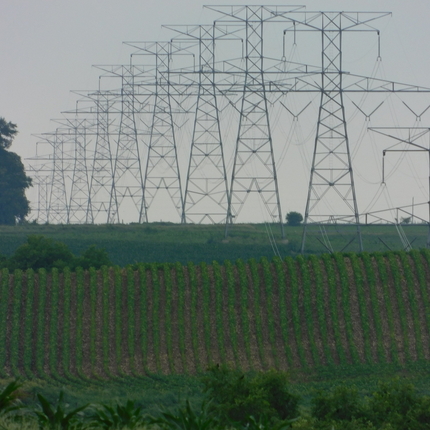As more renewable energy is developed across the nation, regulators and policymakers must prepare for the changing electric power landscape. Clean power commitments have increased at the county and city levels, with 11 counties and 104 cities nationwide pledging to 100 percent clean energy goals at the end of 2018.
The Center for Rural Affairs recently released a white paper, “Capacity for Change: The Role of Transmission Infrastructure in Energy Transition,” which takes a look at an electric transmission system that is evolving to take advantage of clean energy resources.
While transmission improvements have allowed for additional development of renewable energy resources, much of the new grid capacity has already been occupied. For more than a decade, regional transmission planners have worked to address these shortfalls in the electric transmission system and create a network that can connect additional generation to the grid.
Subsequent upgrades are likely necessary for the electric grid to adapt to the changing landscape—estimates point to 70 to 220 gigawatts of new electric generation required as early as 2030.
A robust transmission system will be essential to reap the benefits of renewable energy resources. To address the challenges of a changing electric power sector, regulators and policymakers must plan for an improved electric transmission network that will ensure renewable generation can continue to provide benefits to rural communities while offering opportunities to meet demands for clean energy.
To view “Capacity for Change: The Role of Transmission Infrastructure in Energy Transition,” visit cfra.org/publications/CapacityForChange.





